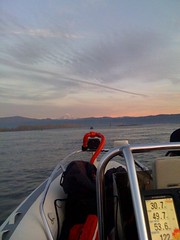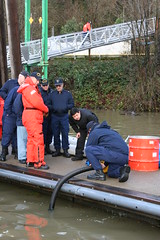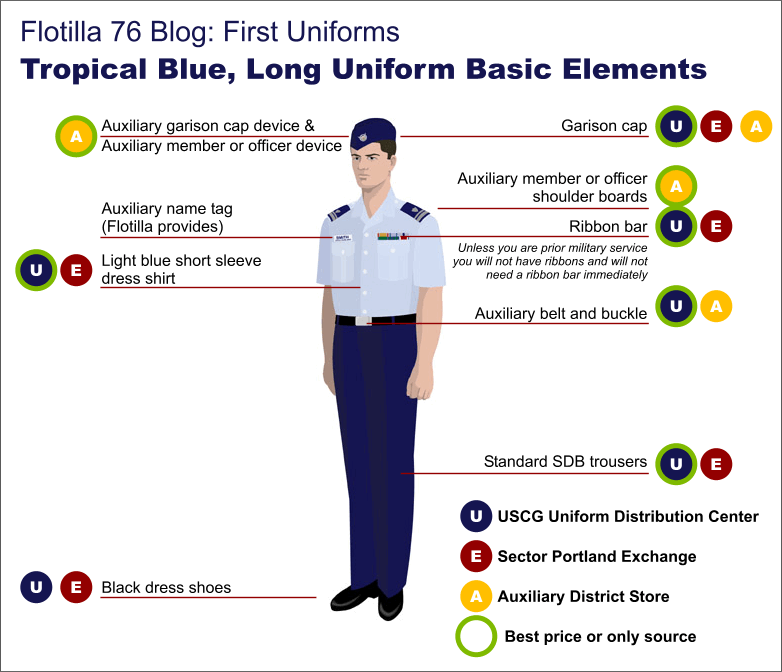
I joined the Auxiliary to do maritime search and rescue. Surface operations is still my passion, a passion I share with many of you. Occasionally I hear frustration from members about not getting underway as much as we'd like. Here are my strategies for increasing surface operations participation:
Get qualified: We work very hard to include crew trainees but members who are qualified crew are more simply more useful -- they count towards the minimum crew requirements. Actively working towards qualification and getting your qualification also shows a basic level of commitment. Qualifying as a coxswain makes you even more in demand since we have many member facility owners who are not coxswains.
Keep current: Once you are qualified make sure you stay qualified by doing your annual hours, completing the required workshops, and doing your triennial QE sessions. Try to get this done well before the deadlines, there is nothing like making the operations program scramble to get a mission together so you can get your hours in or get a QE session to gain you a certain unwanted reputation.
Be humbly competent: We operate in an environment that can be stressful and where everyone must pull their weight to ensure the safety of our team and the citizens who come under our care. Your qualification and currency maintenance ensures that you are minimally competent -- this is only the first step. Effective operators are constantly learning, training and increasing competence. At the same time they also recognize that no matter how much they know there are situations which arise that challenge their capabilities. There isn't room on Auxiliary facilities for people who "know it all" -- these folks break down team coordination (TCT) and cause mishaps. A special note: if you are an experienced mariner but new to the Auxiliary be aware that there is the traditional way and the Coast Guard way - you have almost as much to unlearn as a inexperienced mariner has to learn.
Consider weekdays and short notice call outs: While a significant portion of our operations happen on weekends and holidays when recreational traffic is high we do operate 24/7. If you have a schedule that allows flexibility during the week or for emergent cases please make it known.
Contribute a facility: Owning an Auxiliary facility puts you in the driver's seat, particularly once you are a coxswain. Facilities are the precious resource which allow us to operate. If you have a facility which is a good fit for our AOR, the missions we conduct and is regularly available you and your boat will be in demand.
If you don't have a facility pull your weight: If you don't own a facility recognize that it is an expensive and labor intensive endeavor. Be willing to show up early to help get ready for patrol and then make sure everything is cleaned up at the end of the day. If you have a regular berth (a boat you go out on a lot) it's worth volunteering to do maintenance and help out when the boat is in the yard.
Participate in other Auxiliary activities: The most active surface operators are involved in other facets of the organization - we are like any other group - you need to be around to be noticed.
Help run the organization as a staff member or unit leader: Beyond participation in other missions the next step is a staff or leadership position -- get involved in planning activities and you'll know what is happening and can make a place for yourself. For surface operators the operations, communications, member training, and information services (since you enter all the mission data) staff positions are a great platform for increasing participation in surface operations.
Be assertive: We all lead busy lives and no one is responsible for getting you on the water. Get involved, ask for access to the Patrol Order Management System (POMS) so you can look up who has missions scheduled, organize a mission yourself, get on the phone and call other active surface operators.
Be friendly: Finally, we associate voluntarily, maintaining a positive attitude and being easy to get along with are critical to getting invitations to participate. Fellowship is the glue of the Auxiliary - we want to spend our time among friends.
Please feel free to add your thoughts to the comments section and let me know if you have a dissenting view -- we'll get it posted.
UPDATE: Ken Babick our division vice commander and operations officer notes:
The reality is that many owner/operators have "regular" crew that they count on each and every patrol because they can be counted on in so many ways, available-competent-trustworthy-and easy and fun to be with. Routine OPS are just that-- routine, but its when the rubber comes off the rim, that people have to be ready and prepared to make the mission a success.
 One of my favorite authors, Seth Godin, had a post in September entitled "Probably not stupid" in which he proposes that:
One of my favorite authors, Seth Godin, had a post in September entitled "Probably not stupid" in which he proposes that:

















